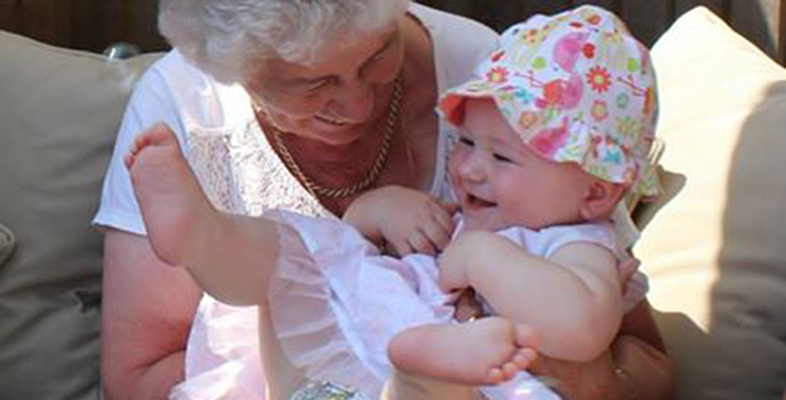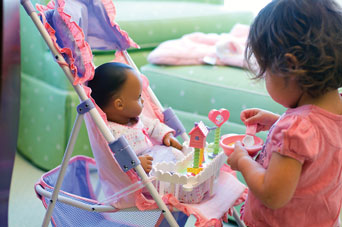3.1 Similarities and differences
A group of international researchers, Catherine Cameron, Roger Hancock, Giuliana Pinto, Beatrice Gamannossi and Sombat Tapanya, studied the play of five 30-month-old girls in their homes in five different locations around the globe: Thailand, Italy, Peru, the USA and Turkey (Cameron et al., 2011). They found clear similarities in the domestic play of all the children – for example, in the use of natural materials and everyday items (pots, pans, wraps, bags, buggies and dolls) in their games. The children also often used one object to symbolise something else in their play, like Selin in Turkey whose cooking pot became a hat, much to the amusement of her family. Equally, the researchers found differences that were linked to the five children’s motivation to ‘re-enact roles that are meaningful from their own cultural perspectives’ (Cameron et al., 2011, p. 84). As you read the following excerpts from the research findings, which feature Beatrice from Italy and Juanita from Peru, think about what is influencing the children’s play.
Example 2: Beatrice and her doll
Beatrice feeds her doll, ‘Coccolone’, whom she has set up in a pushchair on the balcony. She calls for her mother’s assistance, who asks, ‘Shall we put his bib on?’ Beatrice asks her mother to do it after she tried herself; she is undeterred as mother and child work together to arrange the feeding equipment. Beatrice feeds her doll with precise hand movements, which include picking up food that fell on the floor and wiping the baby’s mouth carefully with the bib.
Example 3: Juanita takes care
Juanita also draws on her observations and experiences. She wraps a small doll in a blanket and walks around, holding the doll very close to her, comforting, rocking and patting the doll while her aunt sits knitting nearby. Juanita’s observations of the important women in her life – her mother, aunts and grandmother, engaged in their daily work around her – are apparent in her resourceful play. When her grandmother places a mat on the floor, Juanita arranges her doll and other toys on the mat (including a rabbit, which she also pats). She makes use of a manta (a large colourful cloth used by Peruvian mothers to wrap their children) to wrap gently around her toy rabbit – until it becomes too difficult to manage and the rabbit is dropped on its head!
Juanita uses a chair as a table top where she arranges domestic materials to hand, like those she has seen in her mother’s shop. She incorporates books and objects into her play to explore what she has seen others doing and what she has experienced herself.
The researchers noted that Beatrice brought her own experience of family mealtime rituals to her detailed play; she knew exactly how she wanted to feed her baby, including subtle behaviour such as wiping food away from her mouth. Juanita’s play appeared to be more influenced by specific people, namely the women in her family and their daily activities. Interestingly, the children experienced the adults taking on different roles in sharing their play. Beatrice’s mother was often a co-player entering into dialogue within the roles that were being acted out, whereas Juanita’s aunt was much more on the periphery watching her niece’s activity and occasionally offering directions. These variations again highlight that whilst cultural influences linked to traditions, customs and wider community practices do influence children’s experiences, their impact is distilled by the ways different family groups operate and the relationships with those closest to the child.

